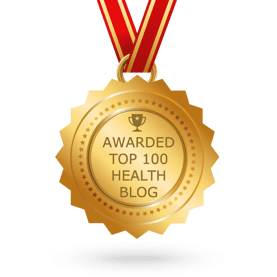
Luke Perry’s death was shocking even for people who did not know him, but for death to occur at the age of 52 from stroke is tragic.
Those over age 65 are at most risk for stroke, but surprisingly, 10% of all strokes occur in people under the age of 45. It is important for people of all ages to get annual check ups with a knowledgeable integrative or functional medicine physician, so that a good prevention plan can be implemented.
Most of us are aware that strokes are caused by disruption of the blood flow to different parts of the brain. This can occur by a blood clot forming in an artery in the brain or a clot that has traveled from somewhere else, usually the heart, lodging on one of the brain arteries, but the worst and most deadly strokes occur due to hemorrhage or blood leaking out of a brain vessel.
Many Causes for Stroke
However, in younger adults in many cases it is the heart that is the source of the problem and cardiac issues can increase the risk of stroke. One cardiac cause is rheumatic heart disease, and this is unfortunately becoming more common with the resurgence of streptococcal throat infection in children. Other cardiac issues can be due to various socioeconomic factors, heart valve abnormalities, or being born with a hole between the right and left side chambers of the heart. These cardiac issues should not be missed on a thorough annual wellness exam!
A subtle but very commonly missed reason for stroke is a torn blood vessel in the neck. This is usually a small tear in a big blood vessel that causes a clot to form. This clot can travel to the brain and cause occlusion of an artery, hence causing a stroke. Therefore, physicians should take a thorough history and make a point to ask about past neck injuries, particularly whiplash injuries of the neck that commonly occur in almost all cases of auto accidents.
Other stroke causes that have been linked to younger stroke age include migraine, pregnancy, birth control pills, and smoking - and these increase the stroke risk for women especially.
One unmistakable, yet reversible risk factor in people under the age of 45 is obesity, and this is a prevalent factor that increases the lifetime risk for stroke. Obesity increases the risk for high blood pressure, sleep apnea, high cholesterol, and diabetes. These are all important stroke risk factors that can be modified, particularly when addressed early.
Stroke Recovery Varies by Age
One of the big differences between stroke in older people and younger people is recovery. Stroke in young people can mean long years of recovery and loss of productive time and earnings. It is important to keep in mind that 15 to 30% of people who have a stroke have some degree of long-term disability. However, on the brighter side, a younger person has a better rate of recovery than an octogenarian because of better brain plasticity, blood vessel elasticity and inherent regenerative powers within their genome.
The survival rate is higher than 90% at five years after occurrence of a stroke in a young person compared with 40% for old age stroke, those over age 65. Ninety percent of the young age stroke survivors can live independently, compared with about 40% of old age stroke patients.
On average, 50 to 70% of young stroke patients can return to work after a stroke. Five-year stroke recurrence rates are half in young patients what they are for the elderly (15% vs. 30%).
The key to managing stroke in young people is to identify and treat the underlying causes immediately without being side tracked by red herrings and other causes like suspected drug abuse, medication side effects, hypoglycemia etc. although these might play a role and can in fact in bring on an acute cerebral event, even partially.
Symptoms of Stroke: Think F-A-S-T
FAST is an acronym for spotting a stroke that’s taught to all emergency personnel. It stands for:
F Facial drooping
A Arm weakness
S Speech difficulties
T Time to call 911
Usually, one side of the body is affected as a stroke is happening in the brain, making someone’s face on that side sag, leading to problems with raising that side’s arm. Slurred or altered speech is common as well, since a stroke may be affecting memory and verbal abilities.
is important to note that there are also atypical warning signs of stroke that are less well known such as tingling or numbness, blurred vision or temporary slurring of speech. In some cases, the warning symptoms of a stroke might be fatigue, jaw pain, dizziness, difficulty breathing, hiccups, and even hallucination!
At this point, time is very crucial, because stroke treating medication must be given within four hours (at the most) from the onset of symptoms to prevent permanent disability or death.
Can You Have a Stroke Without Knowing?
Yes, you can have a stroke without knowing it even happened. And that can raise your risk for future incidents. You could have multiple strokes and have no idea about them taking place. But as time passes the changes in your brain could affect your memory and speech significantly and here family members or friends may notice the difference.
Having one stroke significantly raises your risk for more, especially if the underlying factors for the stroke aren’t addressed such as smoking, having a family history of strokes, taking hormonal birth control pills, having high cholesterol, and/or high blood pressure, or being diabetic.
Stroke Prevention- At Any Age, But Particularly for Young People
-
Annual Physicals must become a life pattern even if you are in your 20’s. Most young adults shrug off the need for screening tests, believing that they don't need to be done until they are older, as if they know for a fact that they are healthy! Annual screenings are a low effort, high reward way to stay ahead of things, catch problems early and remain healthy. Tests for cholesterol, blood pressure, and blood sugar are an indicator for stroke risk, over the past 20 years the incidence of stroke has risen considerably in young adults. Ironically, stroke risk is decreasing for older adults, that’s because the same risk factors that are booming in young people—things like cholesterol and blood pressure—are usually being managed in those over age 50 as these individuals expect such ailments so they routinely get screened for it.
-
Exercise regularly and maintain a healthy weight.
-
Nutrition: Eat an organic diet low in saturated fat and high in fruits, vegetables, and whole grains.
-
Supplements may be necessary especially Vitamin D, Vitamin B12, Probiotics, Vitamin B3, Vitamin C, Coenzyme Q10, antioxidants, and Omega 3 and Omega 6 fatty acids.
-
Get treated early to control high blood pressure, diabetes, sleep apnea and high cholesterol. You might need screening for sleep apnea as it can increase your risk of developing stroke, amongst other things. It is a potentially serious disorder and more common in men.
-
Get Genomic testing for genetic inclination and hereditary disorders.
-
Avoid alcohol, drugs, and smoking.
Schedule a wellness exam to get more insight into your risks of developing a stroke and how to reduce those risk factors.
.png?width=305&height=132&name=NIHAlogoBLUE_3_transparent%20(2).png)

